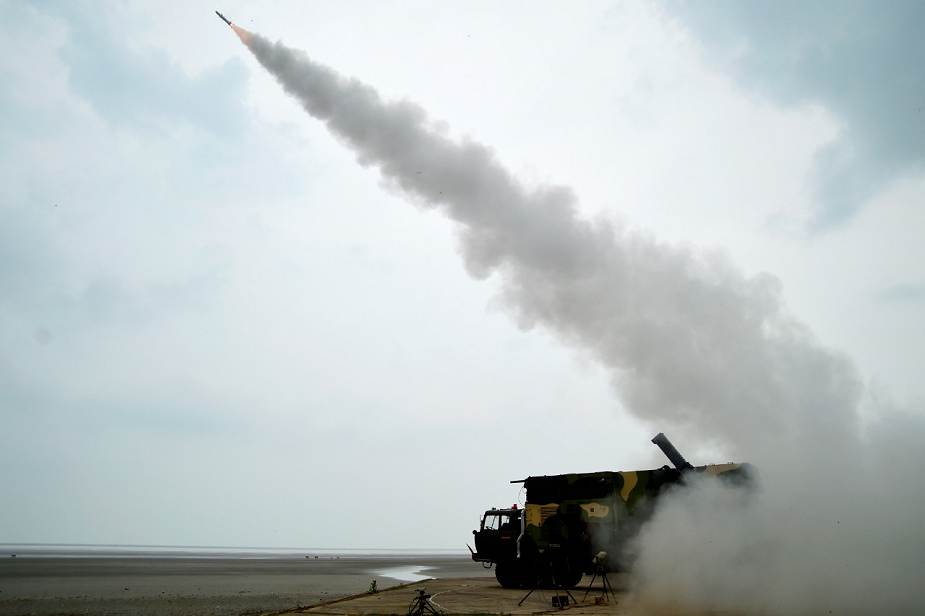According to information released by the Indian Ministry of Defense on July 21, 2021, the Indian Defence Research & Development Organisation (DRDO) successfully flight-tested the New Generation Akash Missile (Akash-NG), a surface-to-air missile at the Integrated Test Range (ITR) off the coast of Odisha on July 21, 2021.
Follow Army Recognition on Google News at this link

India has conducted flight tests of surface-to-air missile Akash-NG on July 21, 2021. (Picture source Indian MoD)
The flight trial was conducted at around 12:45 PM from a land-based platform with all weapon system elements such as Multifunction Radar, Command, Control & Communication System and launcher participating in a deployment configuration.
The missile system has been developed by Defence Research & Development Laboratory (DRDL), Hyderabad in collaboration with other DRDO laboratories. The launch was witnessed by the representatives of the Indian Air Force. In order to capture flight data, ITR deployed a number of Range stations like Electro-Optical Tracking System, Radar, and Telemetry. The flawless performance of the entire weapon system has been confirmed by complete flight data captured by these systems. During the test, the missile demonstrated the high maneuverability required for neutralizing fast and agile aerial threats.
Once deployed, the Akash-NG weapon system will prove to be a force multiplier for the air defense capability of the Indian Air Force. Production agencies Bharat Electronics Limited (BEL) and Bharat Dynamics Limited (BDL) also participated in the trials.
The Akash is a medium-range mobile surface-to-air missile defense system developed by the Defence Research and Development Organisation (DRDO) and produced by Bharat Dynamics Limited (BDL) and Bharat Electronics (BEL). The Akash NG is an improved variant of the Akash that has an improved reaction time and a higher level of protection against saturation attacks. It has a maximum operational range of 80 km.














